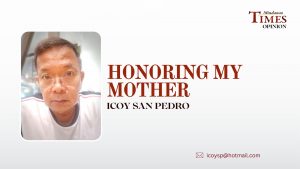In my last article, I wrote about the new rules in Civil Procedure that will take effect on May 1, 2020.
Today, I am writing Part II because there is another set of rules that will also take effect on that day, the 2019 amendments to the Rules of Evidence.
Just like the new rules in Civil Procedure, I’m a little worried that there is not much discussion of the new rules in the legal community despite the fact that it will take effect in just a little over a month. This particularly true considering the major changes introduced in the new rules.
Let me take up some of the more glaring changes.
When presenting documents as evidence, the general rule is that you have to present the original, meaning the piece of paper, the contents of which is the subject matter of what is in issue. For example, if a contract is the subject of the case, then the contract itself, with the original signatures of the parties, is required to be presented and this includes copies of the contract that were signed on, or about the same time which is sometimes referred to as a “duplicate original”.
The new rules already incorporates the rules on electronic evidence, as well as jurisprudence over the years, which is why the term “original” now includes photos printed from the same negative as the original and, if it is about data stored in a computer or similar device, any printout or other output readable by sight, that accurately depicts the data, are also considered as “original”.
Another thing, duplicates, or copies of the original made through electronic, mechanical, or photographic means, including enlargements and miniatures, are also admissible equivalent to an original unless there is a question on the authenticity of the original. In essence, unless there is such a question, a photocopy or “xerox” will already be admissible like an original.
Also, when voluminous records are documents are involved and only the result, sum, or reconciliation of these records is sought to be established, the evidence may be presented in the form of a chart, summary or calculation. In a case, for example, of a supplier and a distributor where it is necessary to determine, between the two of them, who is in debt, it is easier to present a summary of the reconciliation of their accounts in instead of presenting each and every purchase order, delivery receipt, check, sales invoice and stock withdrawal slip for each and every order over the years.
Of course, the documents must still be available if any question arises regarding the entries in the summary.
Lawyers should know that the previously all-encompassing coverage of the attorney-client privilege, which prohibits lawyers from revealing nearly everything learned though his dealing and discussions with his client, now specifically EXCLUDES, among others, advice or services sought by the client to commit, or plan to commit, a crime or something the client ought to know is a crime.
Thus, lawyers giving advice to a client on how to evade the payment of taxes can now be questioned about it.
One thing though, the lawyer-client privilege now covers persons “reasonably believed by the client to licensed to engage in the practice of law”. It is funny to think that fake lawyers can now claim the attorney-client privilege.
The same is true about the “priest-penitent” privilege, intended to protect the sanctity of the confessional, because it now also covers persons reasonably believed by the penitent to be a priest or minister. If fake lawyers are covered, so are fake priests.
Mediators will be happy to know that, except in some situations, the conduct of the parties, as well as statements made, during compromise negotiations have already been specifically deemed inadmissible in civil cases and, as to criminal cases, there is a similar prohibition against statements made in the course of plea-bargaining with the prosecution if negotiations are unsuccessful or if the plea is later withdrawn.
A tidbit that is useful to lawyers using documents from another country, while the present rules require nearly every document or record that comes from a foreign country to be authenticated by the Philippine embassy, consulate or legation there, the new rules will already treat records from a foreign country as public documents if the Philippines and the other country is a signatory to a treaty or international convention where such a record is considered a public document.
There are, of course, more changes or amendments in the new rules and I only hope that the foregoing will already get lawyers, as well as litigants, interested enough to go through the rules themselves.
Again, May 1, 2020 is just around the corner, and it will be much better to be prepared that get caught with your pants down in open court.



